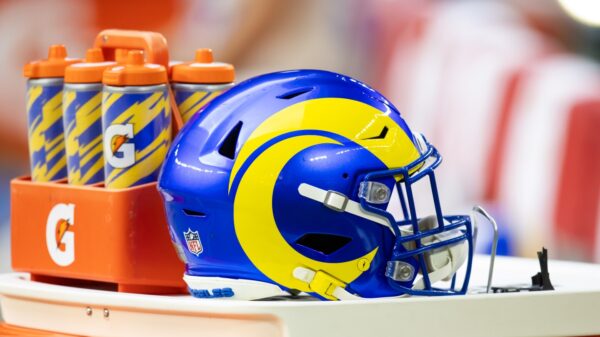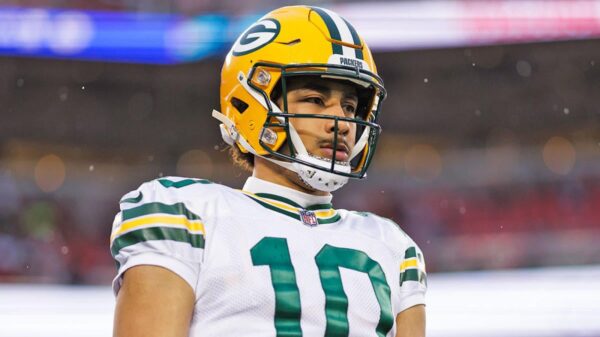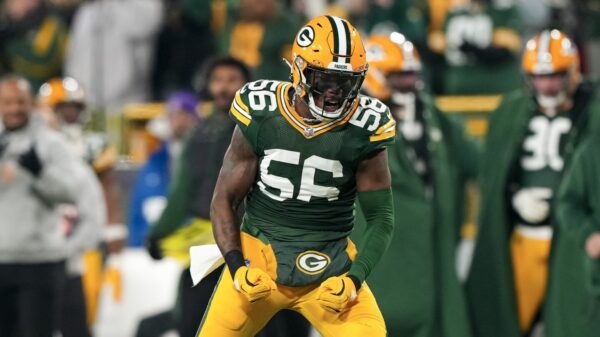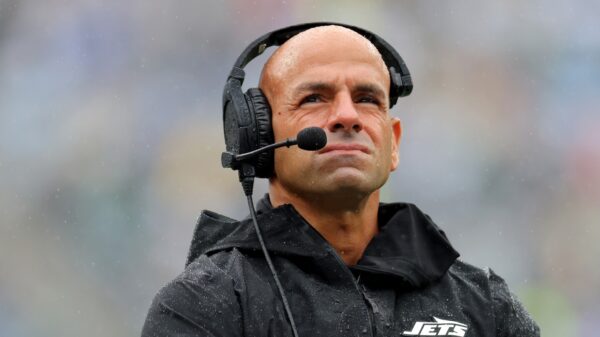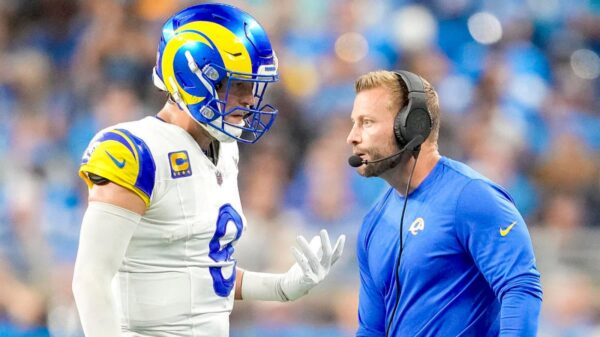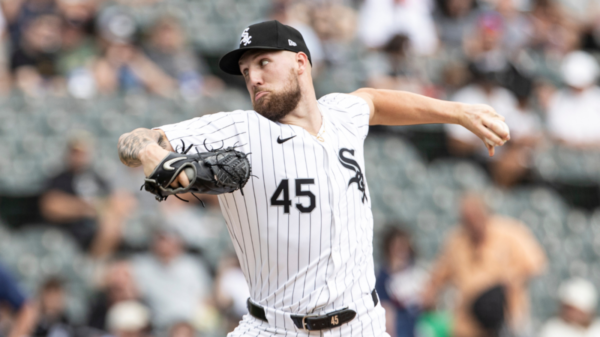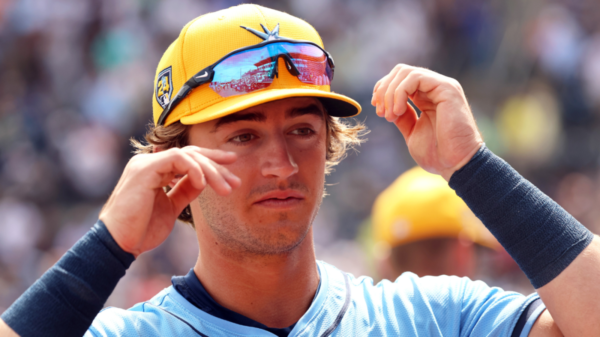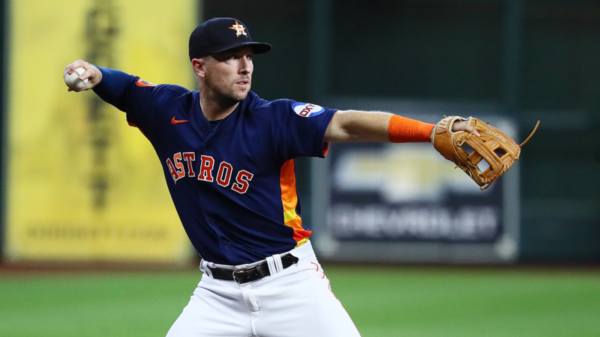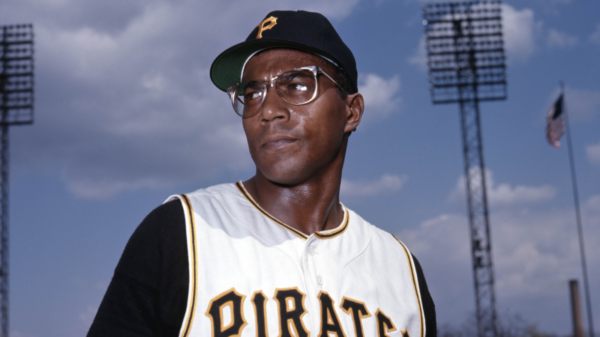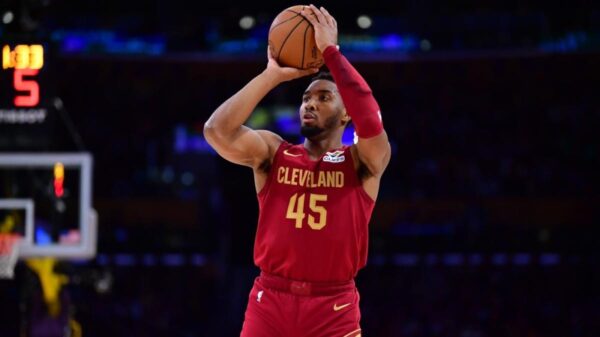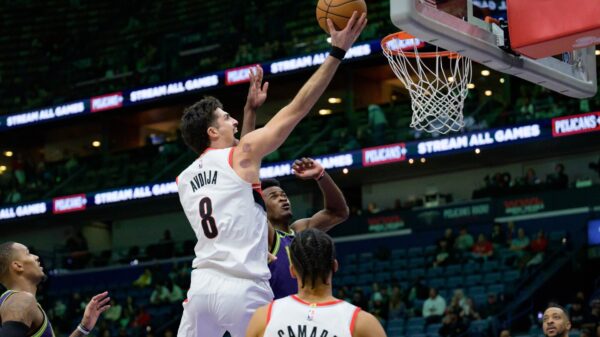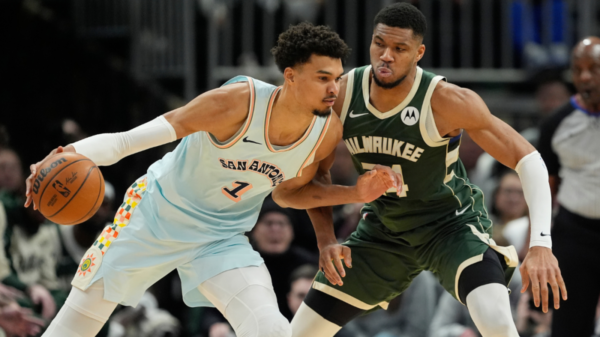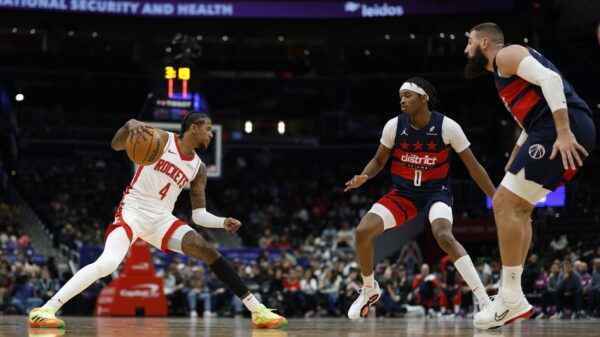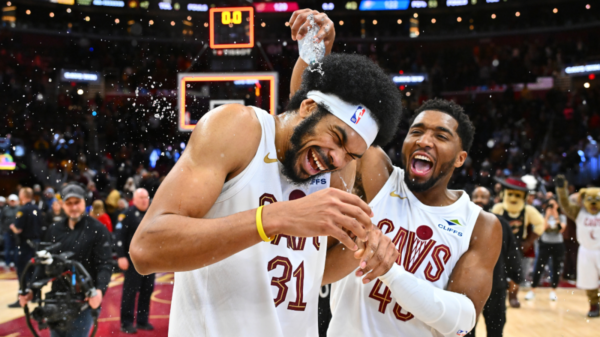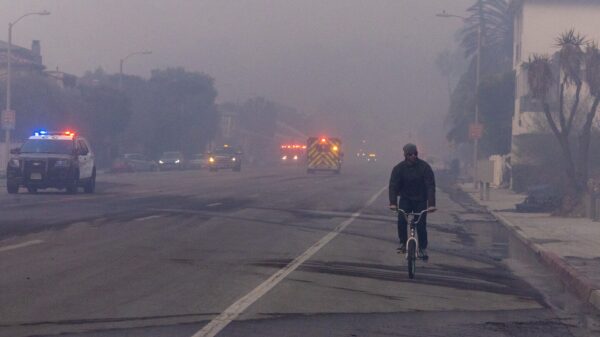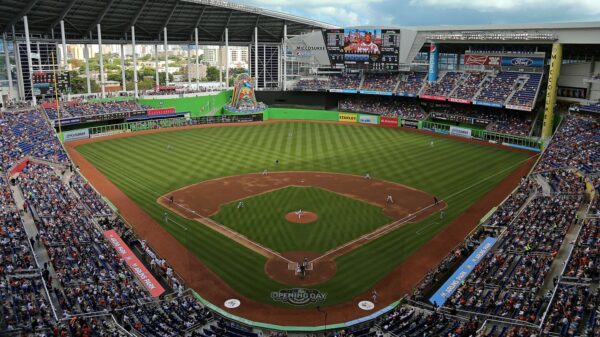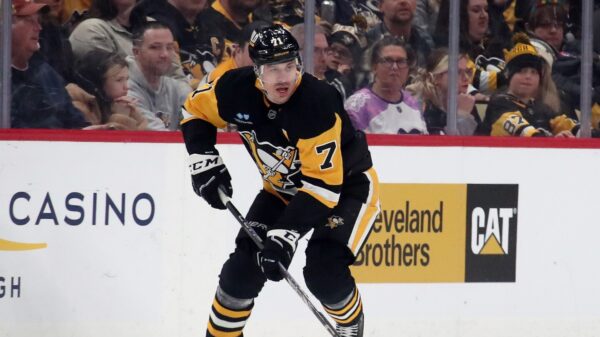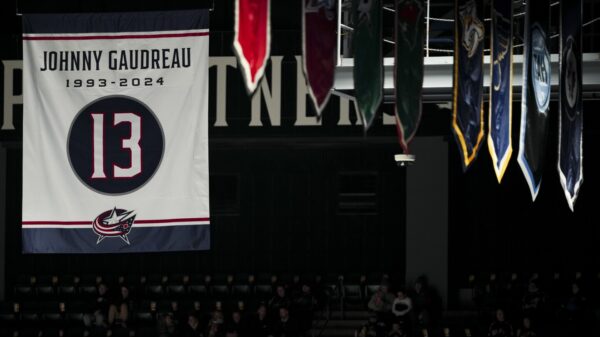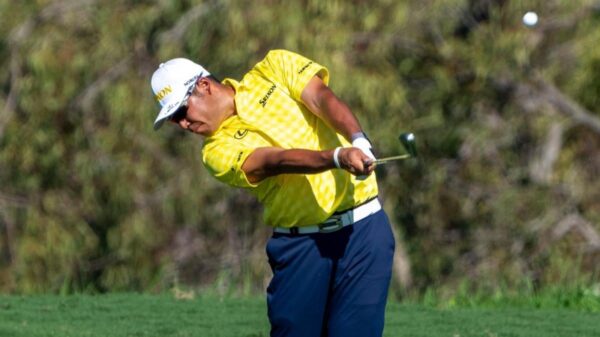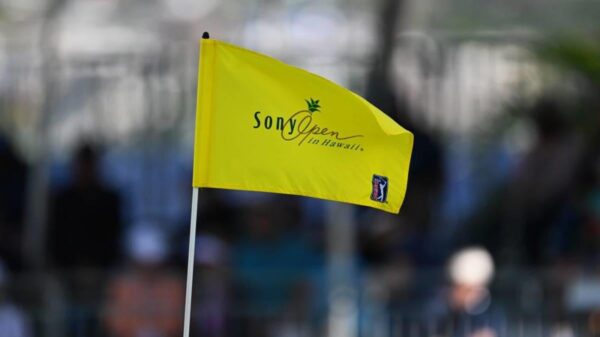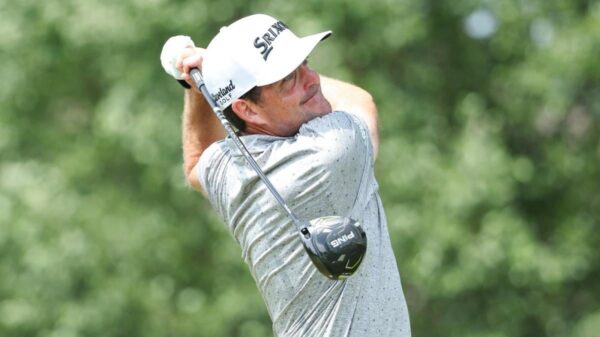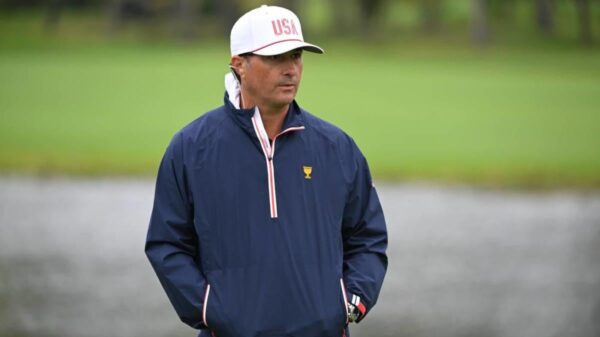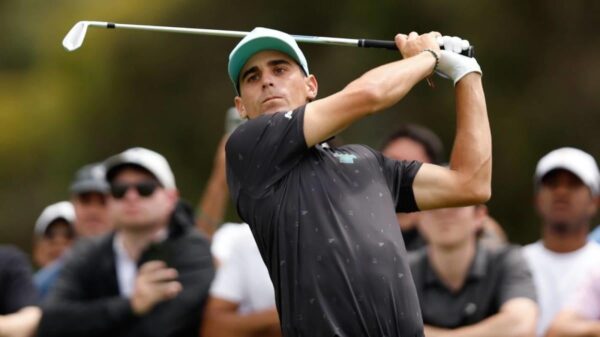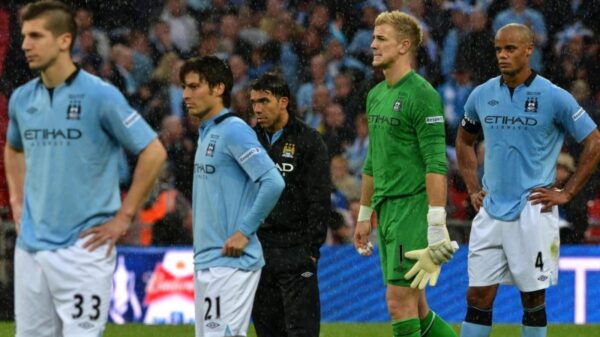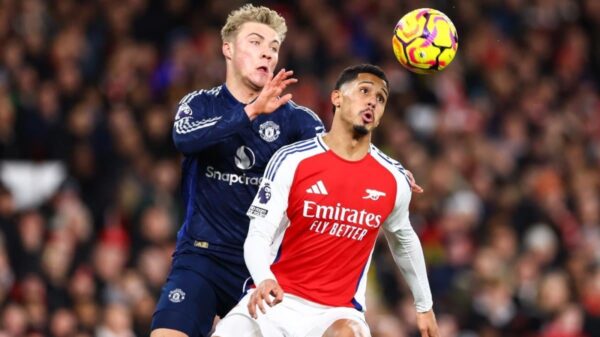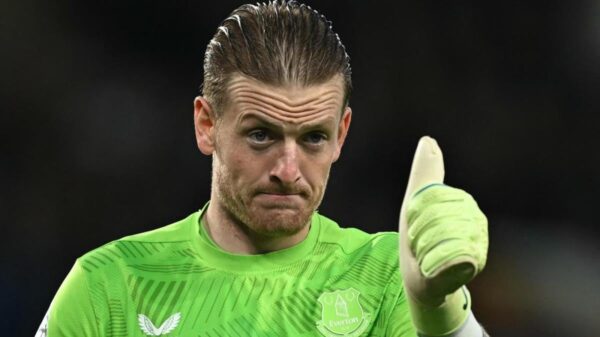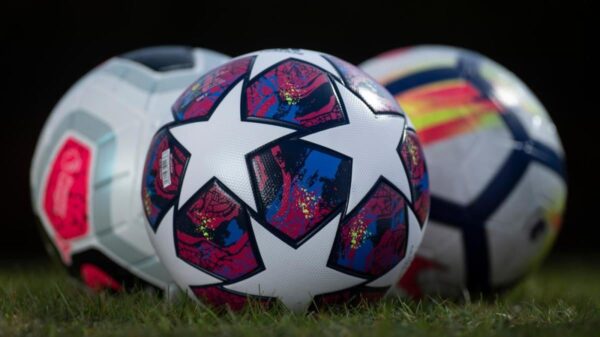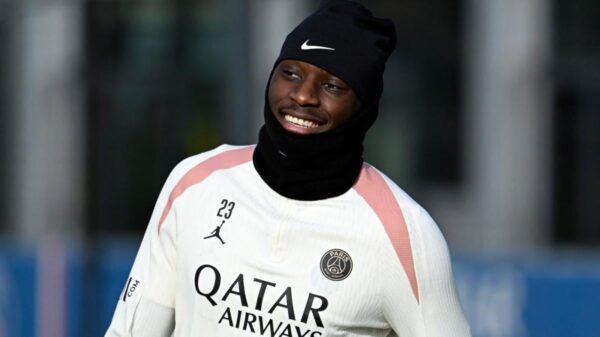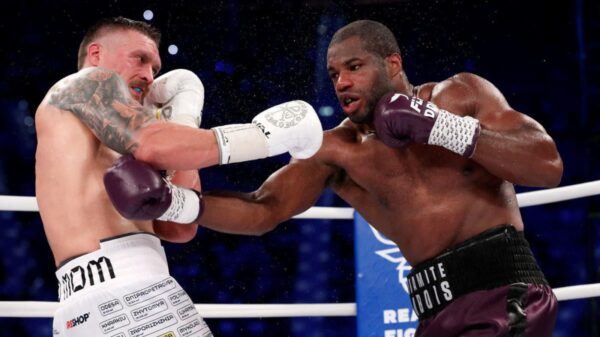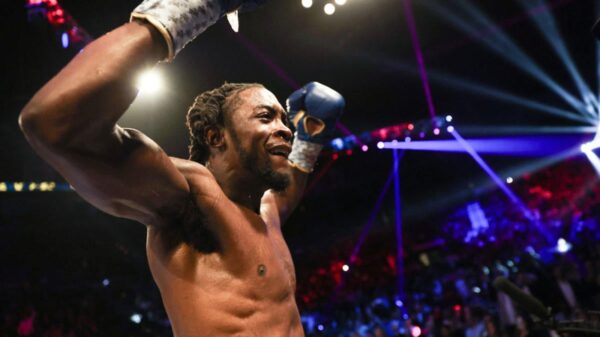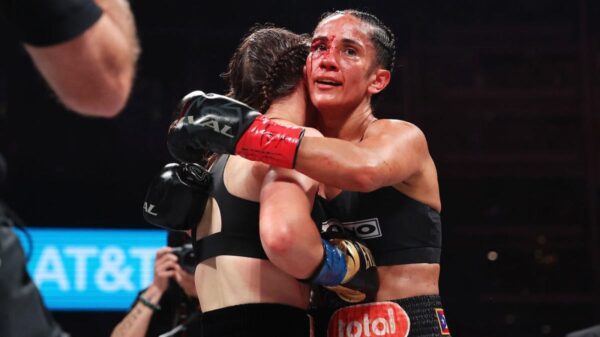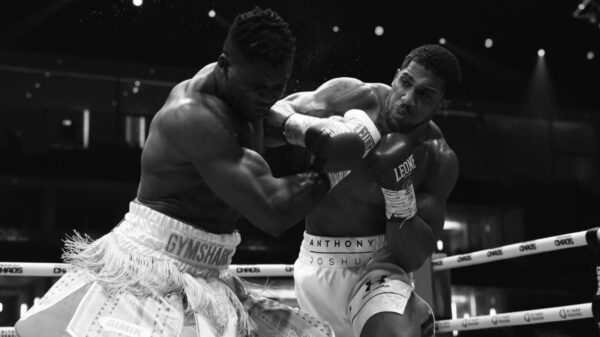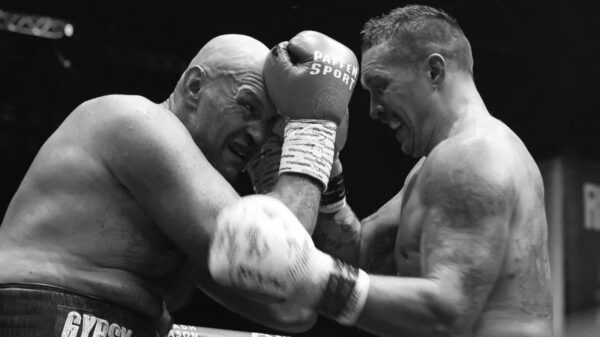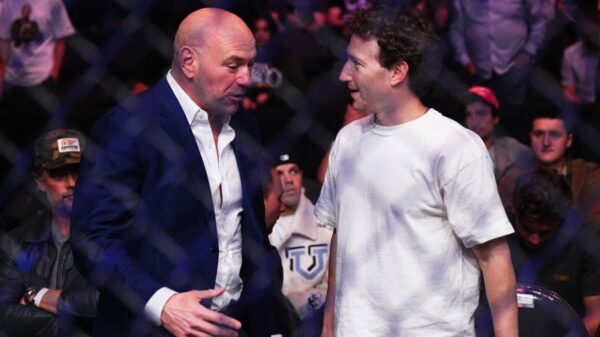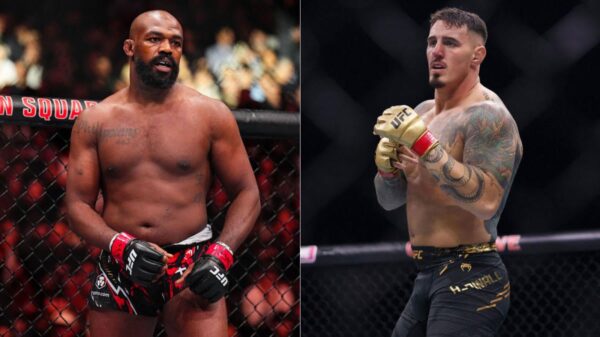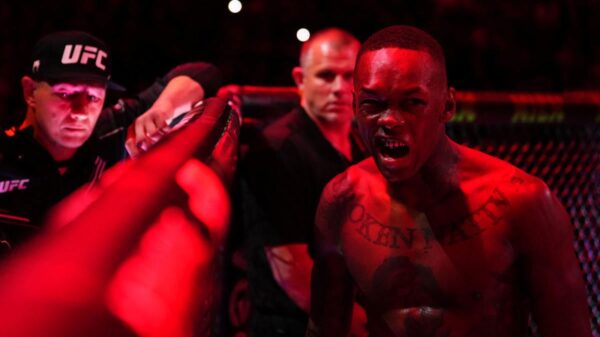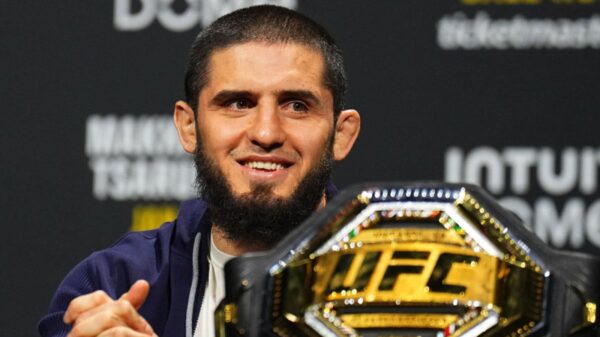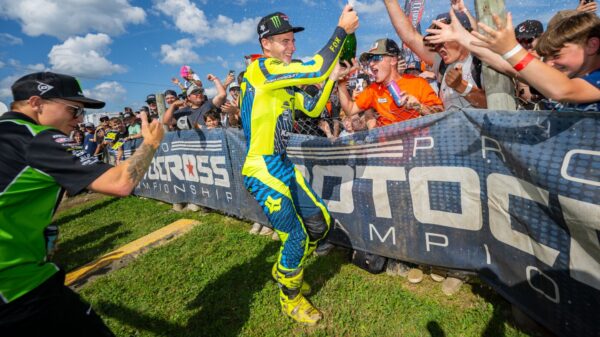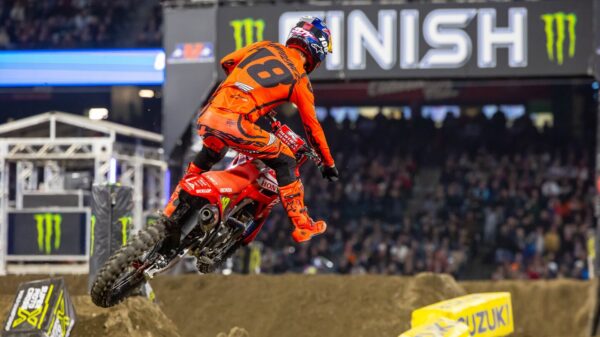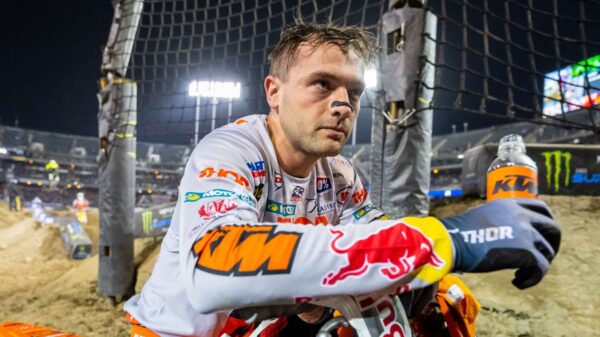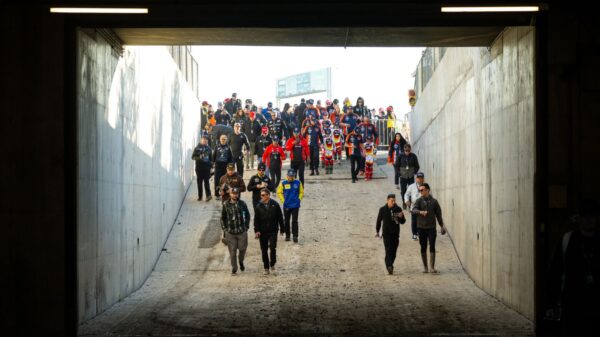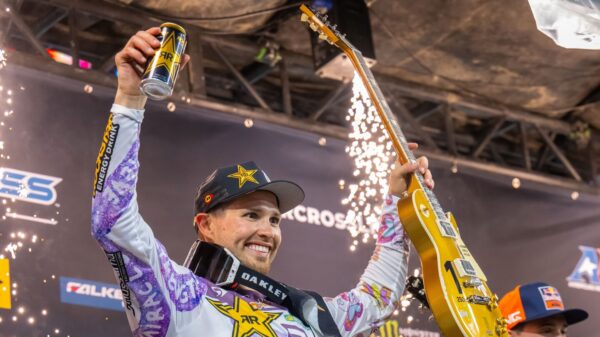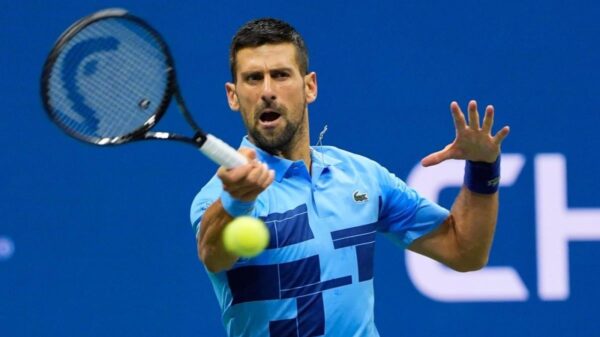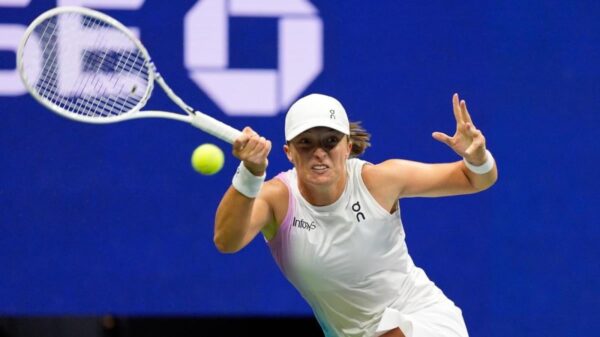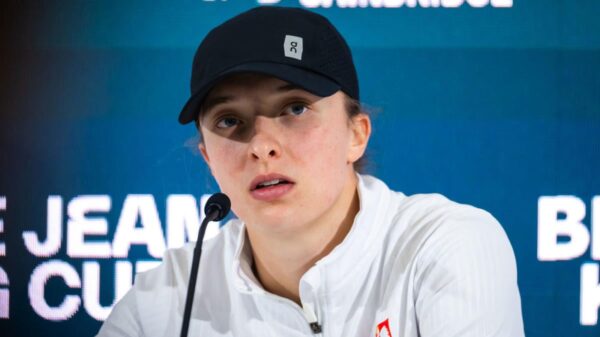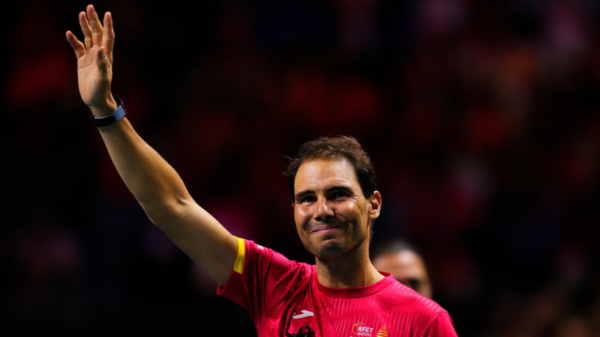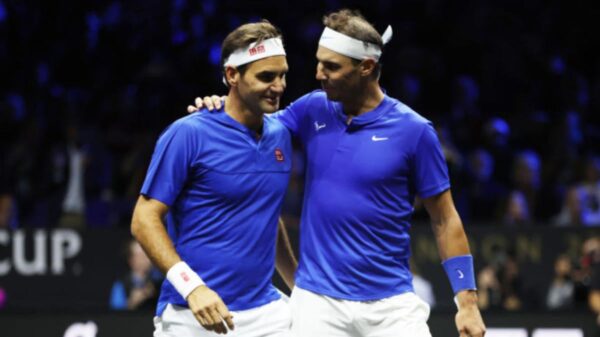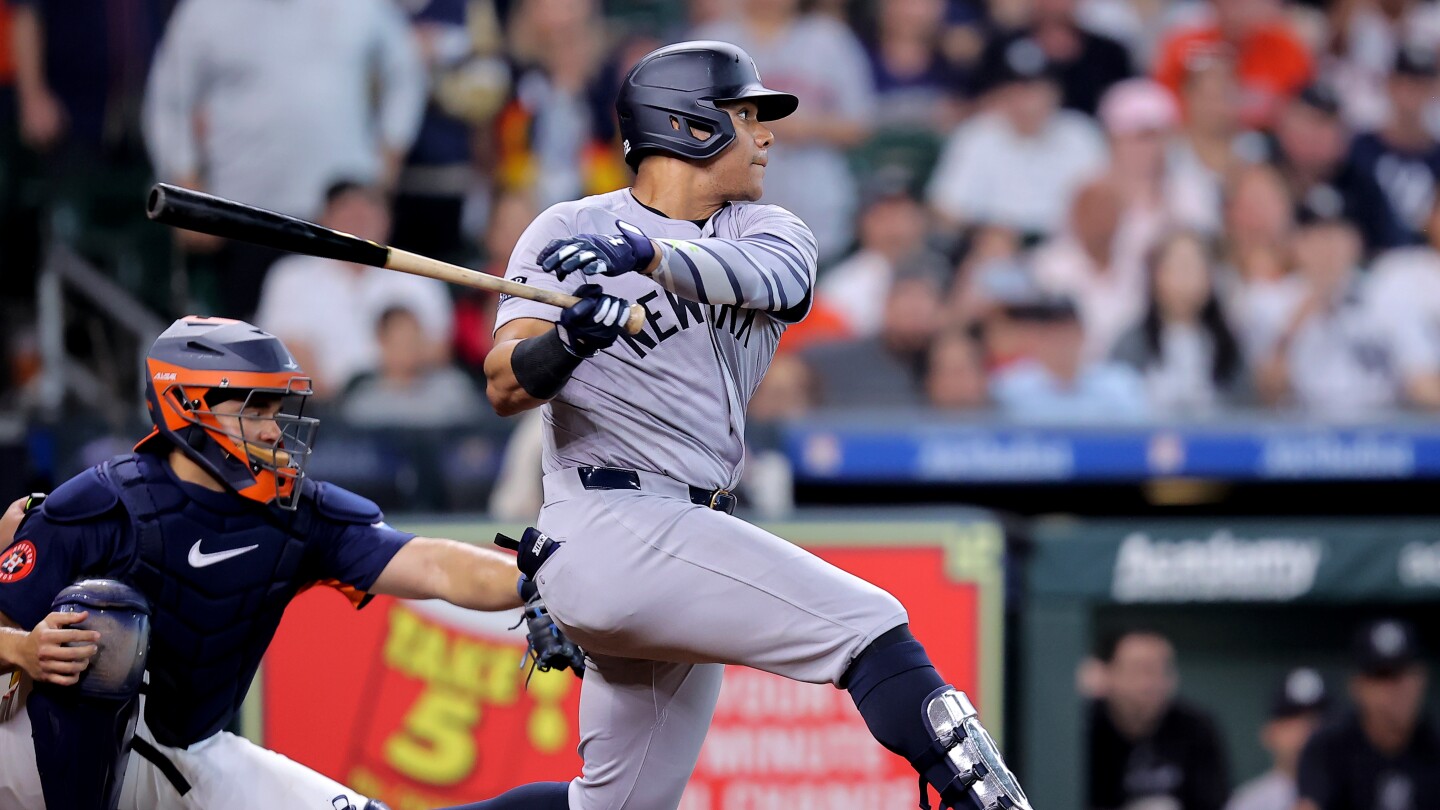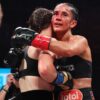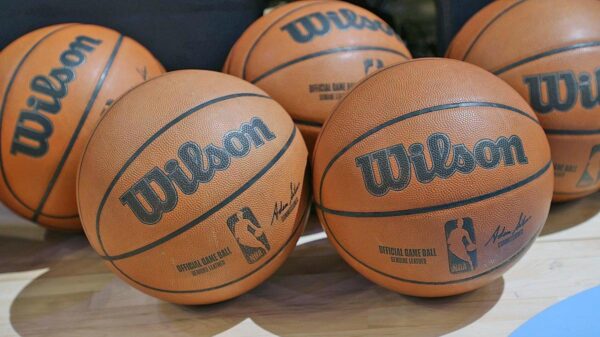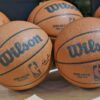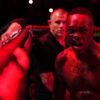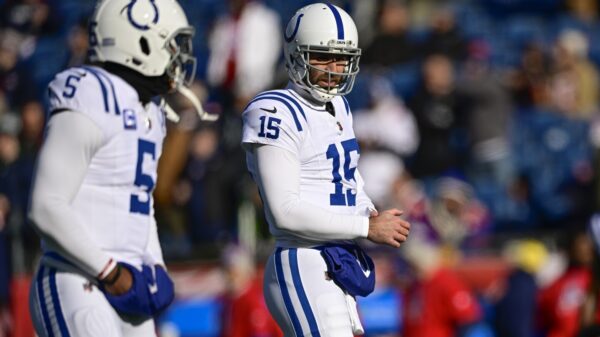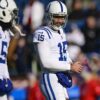Welcome to the 2024-25 edition of the Top 111 MLB Free Agents. Excluded are players whose options are practically certain to be picked up. That group includes Freddy Peralta, Marcell Ozuna, Eugenio Suárez, Merrill Kelly and Brandon Lowe. I’m also ignoring Robbie Ray, Jordan Montgomery, Lucas Giolito and Rhys Hoskins, all of whom figure to pick up their player options. Finally, I’m excluding top Japanese pitcher Roki Sasaski, who is uncertain to be posted and could receive only a minor league contract anyway, since MLB rules would prevent the 22-year-old from earning what he’s worth. He’d be No. 2 on this list if he were a true free agent.
Players are ranked based on how I expect teams will view them, not on how I view them myself. As such, they’re listed from predicted biggest contract to smallest, using an adjustment for multiyear deals.
All ages are as of Apr. 1, 2025.
1. Juan Soto (26, OF, Yankees): The ridiculous thing about Soto’s 2024 is that there was ample evidence that he was unlucky in hitting .288/.419/.569 with 41 homers. He had a wOBA of .421 and an xwOBA of .463, the greatest negative difference of any batting-title qualifier. He had 91 barrels. The average hitter had 56% as many homers as barrels in 2024. Soto’s previous career rate was 60%. He finished at 45% last season, even though he was playing at Yankee Stadium half of the time. Just 26, Soto should land the first true $50-million-per-year contract in MLB history (Shohei Ohtani’s heavily-deferred contract was valued at $46 million per season), though if he wants to go ultra long-term with the deal, it could come in below that. Prediction: 12 years, $600 million
2. Corbin Burnes (30, SP, Orioles): That Burnes’ strikeout rate has plummeted from 36% in 2021 to 23% last season seems scary, but he’s obviously remained very successful anyway, and the modest velocity drop he experienced in 2023 didn’t carry over to his first season in Baltimore; his 95.3 mph average on his cutter actually edged out his previous career high from 2021. He’s also been extremely durable, with his only absence in the last five years coming as a result of COVID-19 in 2021. Prediction: six years, $192 million
RELATED: MLB Free Agency FAQs; important dates, qualifying offers, and more
3. Max Fried (31, SP, Braves): Ignoring Clayton Kershaw for the moment, Fried has the best career ERA+ of this winter’s free agent starters. In fact, he tops everyone when it comes to active pitchers age 34 or younger with at least 700 career innings pitched:
Max Fried: 140 in 884 IP
Shane Bieber: 133 in 843 IP
Gerrit Cole: 130 in 1,954 IP
Sandy Alcantara: 130 in 901 IP
Zac Gallen: 129 in 815 IP
Corbin Burnes: 129 in 904 IP
Blake Snell: 128 in 1097 IP
The problem here is that there’s still some concern about Fried’s elbow after he missed much of 2023 with a forearm strain. He experienced a similar issue in the middle of last season, though he missed just two starts then. His velocity is unchanged since he got hurt, but he has missed fewer bats. He’s the free agent starter most likely to post the best ERA for the next six years and also the free agent most likely to see his deal voided after flunking a physical. Prediction: five years, $150 million
4. Willy Adames (29, SS, Brewers): Adames bounced back to his 2020 and ’21 level of performance offensively last season, and since he racked up 688 plate appearances in the process, he set new career highs in a bunch of categories. His defensive numbers, typically very good in 2022 and ’23, took quite a hit, with some suggesting he was among the game’s worst shortstops. It’ll be interesting to see how teams view him there; he’s certainly going to remain at shortstop for now, but it’s going to cut into the length of his deal if clubs think he’ll need to move to third in three or four years. Prediction: six years, $156 million
5. Gerrit Cole (34, SP, Yankees): Expectations going into last season were that Cole would opt out of the remaining four years and $144 million left on his deal and the Yankees would then exercise their right to keep him by adding one additional year at $36 million to his contract. However, Cole’s elbow injury and the slightly diminished stuff he dealt with after returning make it far more likely that Cole will ignore the opt out. Prediction: declines to become free agent
6. Alex Bregman (31, 3B, Astros): Although he’s never come close to reaching his heights from 2018 and ’19, Bregman is probably a little underrated at this point. Slow starts the last two years have played a role in that; he has average numbers for most of the summer, yet by season’s end, there he is with another 120 OPS+ and 4 WAR. Also feeding into the perception are the cheap homers he’s hit at Minute Maid Park, but he somehow has received no home-field advantage in his career (94 HR, .846 OPS at home, 97 HR, .850 OPS on road). With his quality defense and elite contact rate, one imagines he’ll remain a fine regular for several more years. Prediction: five years, $140 million
7. Blake Snell (32, SP, Giants): Snell won Cy Young Awards in 2018 and 2023, but the very best stretch of his career came in the final three months of last season, when he posted a 1.23 ERA and a 114/30 K/BB in 14 starts. He pitched 80 1/3 innings and allowed just 33 hits and two homers. Of course, what preceded that at the beginning of the season was hideous, but that he signed so late gives him some cover there. Snell is 32 now and not exactly an innings eater, so the long-term deal he though he deserved last winter might again elude him. Still, it will be an easy call for him to decline his $30 million player option. Prediction: four years, $124 million
8. Pete Alonso (30, 1B, Mets): The chances of Alonso staying put almost surely increased with him playing the hero in the Mets’ run to the NLCS; he hit .273/.431/.568 with four homers in 13 games. His production has been down the last two regular seasons, in part because his strikeout rate is up. What’s interesting about that, though, is that he had better contact numbers last season. He’s swinging at fewer pitches than he used to, which seems like it should lead to more walks, but it really hasn’t. There are no immediate red flags here, and there’s a good chance Alonso’s 2025 will wind up a little better than his last two seasons. Years four and five of his next contract could be ugly, but that’s true of all of the top free agents, even if it seems particularly likely here. Prediction: five years, $125 million
9. Anthony Santander (30, OF, Orioles): Santander’s 44-homer campaign was probably something of a fluke, considering that he had just 55 barrels; Statcast had him at 37 homers and with a .328 xwOBA very much in line with his career numbers. On the other hand, Camden Yards wasn’t doing him any favors; his road OPS was 110 points higher than his home OPS (.866 to .756), and only Aaron Judge, with 27, topped his total of 26 road homers. Santander is pretty slow, and a long-term deal is probably going to see him spend the back half of it as a DH. Still, he’s very good right now, and that he can hold his own in right field is going to make him very attractive for the short term. Prediction: five years, $110 million
10. Cody Bellinger (29, 1B-OF, Cubs): Bellinger’s big rebound campaign in 2023 was followed by a solid-but-unspectacular 2024. Since his debut in 2017, his OPS+s have come in at 143, 120, 167, 112, 44, 81, 139 and 111. It seems like there’s really no telling what’s coming next, but Statcast indicates that he truly has leveled off the last two seasons and that he was just very lucky in 2023. For 2025, Bellinger has the option of taking a $27.5 million player option to stay with the Cubs, which would also give him a $25 million player option for 2026, or to take a $2.5 million buyout and return to free agency. He’ll probably opt out and do just fine, but his hopes of megacontract exceeding five years should again fail to materialize. Prediction: three years, $75 million
11. Christian Walker (34, 1B, Diamondbacks): MLB’s steadiest bat the last three years belongs to a guy who never got a real chance until age 28 and who could have been non-tendered after a disappointing age-30 season. Walker, though, has posted OPSs of .804. .830 and .803 since 2022, hitting 95 homers and also winning two (and maybe a third) Gold Gloves in the process. That he’s turning 34 in March would make it difficult to go beyond three years here, but there are several contenders who should be interested in such an obvious two-way upgrade at first base. Prediction: three years, $75 million
12. Jack Flaherty (29, SP, Dodgers): Flaherty took a one-year, $14 million contract from the Tigers in his first foray into free agency. Things will go better this time around, after he went 13-7 with a 3.17 ERA in 28 starts, but maybe not quite as well as they would have if he hadn’t struggled in three of his five postseason starts. He wound up with a 7.36 ERA and a 15/9 K/BB ratio in 22 innings for the champs. Prediction: three years, $72 million
13. Teoscar Hernández (32, OF, Dodgers): The three- and four-year offers Hernández was hoping for were never put on the table last winter, causing him to take a one-year, $23.5 million deal from the Dodgers. He wound up hitting a career-high 33 homers and making his second All-Star team. He also hit three homers and drove in 12 runs in 16 postseason games. Prediction: three years, $72 million
14. Ha-Seong Kim (29, SS, Padres): Complicating free agency for Kim is that he’s coming off season-ending shoulder surgery and he probably won’t be ready for Opening Day, though he is targeting a mid-April return. It shouldn’t stop him from landing a nice multiyear deal in free agency. Kim’s offensive production slipped a little last season, but it seemed like some bad luck was involved; he had his best exit velocity numbers and strikeout rate to date while hitting .233/.330/.370. On defense, he’s a fine shortstop and an elite second baseman. Maybe he’ll take a one-year contact in the hope of doing better next winter, but the guess here is that he won’t need to. Prediction: four years, $80 million
15. Sean Manaea (33, SP, Mets): The funny thing about Manaea’s crossfire delivery change saving his season was that he had a 2.98 ERA in his final eight starts before dropping down on July 30. Still, he was particularly good against a pretty easy schedule afterwards, going 6-2 with a 3.09 ERA and a .170 average against in his final 12 starts. He’ll opt out of his $13.5 million player option and likely land at least a three-year deal. Prediction: three years, $66 million
16. Walker Buehler (30, SP, Dodgers): It was only two starts covering nine innings and then somewhat notable one-inning relief appearance, but Buehler looked good enough in the NLCS and World Series to rate a multiyear deal this winter. That seemed highly unlikely a month ago, after he experienced a midseason demotion and wound up 1-6 with a 5.38 ERA over 16 starts in his return from Tommy John surgery. Of course, if he’s feeling good about where he’s at, his most lucrative path would certainly be to sign a one-year deal now and go back out on the market next winter. Prediction: two years, $50 million with an opt out after one year
17. Nathan Eovaldi (35, SP, Rangers): Eovaldi has finished with ERAs between 3.63 and 3.87 each of the last five seasons, which is pretty impressive. Still, with scoring down across the league and Globe Life Field being more pitcher friendly than Fenway was, his 104 ERA+ in 2024 doesn’t nearly match his 120 mark from 2020-23. Eovaldi has stayed relatively healthy of late, and he qualified for the ERA title for just the third time in his career by throwing 170 2/3 innings last season. He did miss some time in 2023, but he was at his best at the right time then, going 5-0 with a 2.95 ERA during the Rangers’ championship run. That and his previous October success will make him extra attractive to big-spending contenders. Prediction: two years, $50 million
18. Michael Wacha (33, SP, Royals): Wacha’s velocity fell off in 2023, but he was effective for the Padres anyway, and he landed a two-year, $32 million deal with the Royals that included a player option for 2025. Last season, his velocity came back, and he recorded his highest inning total since 2015 (166 2/3) while going 13-8 with a 3.35 ERA. He’ll surely decline that player option, and he might be a candidate for a three-year deal this winter. Prediction: two years, $44 million
19. Luis Severino (31, SP, Mets): Unlike the first two in 2017 and ‘18, the third full season of Severino’s career won’t earn him a place on any Cy Young ballots. Still, he was reliable in posting a 3.91 ERA in 31 starts for the Mets. His 21% strikeout rate was well off from those previous two seasons, when he came in at 29%. His velocity was still plenty good, but his 96-mph average on his fastball was 1.5 mph off his peak. Maybe there’s still more in store if he’s able to remain healthy, but going beyond two years seems pretty risky. Prediction: two years, $40 million
20. Yusei Kikuchi (33, SP, Astros): Kikuchi had a 2.64 ERA in his first 10 starts for the Blue Jays last season and then a 2.70 ERA in his last 10 starts after being traded to the Astros. The middle of the season was ugly, but when all was said and done, he wound up with a career-high 28% strikeout rate and a career-low 6% walk rate. The overall track record isn’t great — he has a 91 ERA+ as a major leaguer — but he’s been durable and he’s throwing as well as ever. It shouldn’t be difficult for him to land a multiyear deal. Prediction: two years, $40 million
21. Tanner Scott (30, RP, Padres): Scott had a 4.61 ERA and a 14% walk rate through age 27, but he’s on the short list of the game’s most valuable relievers the last two years, amassing a 2.04 ERA and a 188/60 K/BB in 150 innings for the Marlins and Padres. In the 2024 postseason, he struck out Shohei Ohtani all four times he faced him and wound up pitching 4 1/3 scoreless innings in all. The two concerns here are that he’s been worked pretty hard and that his walk rate jumped back up to 12% last season after falling to 8% in 2023. Still, he should land the biggest contract of any reliever this winter. Prediction: four years, $56 million
22. Max Scherzer (40, SP, Rangers): This certainly isn’t how Scherzer wanted to return to free agency after finishing up his record three-year, $130 million contract. Limited by back and shoulder woes, he made just nine starts and wound up with a 3.95 ERA for the Rangers. He also showed clear signs of decline in 2023, posting a 3.77 ERA that was his highest mark since 2011. Still, it’s hard to write off a true great like this. He might be a little stronger with a rested arm next year, and even in 2023, he was still striking out 28% of the batters he faced with velocity close to his career norms. Predcition: one year, $25 million
23. Tomoyuki Sugano (35, SP, Japan): Sugano almost came to the U.S. after the 2020 season, but he instead took a four-year, $40 million to remain with Yomiuri. He wasn’t quite his usual self over the first three seasons of that deal, but he bounced back in 2024, going 15-3 with a 1.67 ERA and a 111/16 K/BB in 156 2/3 innings. His career ERA over 12 seasons with Yomiuri is 2.43. He’s 35 now, and his strikeout rate isn’t nearly what it used to be, but one imagines he’ll find a way to get outs in MLB. Prediction: two years, $36 million
24. Nick Pivetta (32, SP, Red Sox): Those still longing for a breakout season from Pivetta based on his exploding strikeout rate in 2023 came away disappointed once again in 2024, and, yet, he provided new reason to think something better might be in store in the future. After all, his 29% strikeout rate was outstanding, and his 6% walk rate was a career best. He finished with a 4.14 ERA, but Statcast gave him a 3.59 xERA and SIERA had him even better at 3.31. Pivetta did miss a month last season with a flexor strain, but he recovered well, and he’s been very durable otherwise. There will be a few teams out there thinking they can get more from him than the Phillies or Red Sox did. Prediction: two years, $36 million
25. Tyler O’Neill (29, OF, Red Sox): O’Neill gave the Red Sox pretty much what they should have hoped for after arriving from St. Louis, hitting .241/.336/.511 in 113 games. It was far and away his second-best season as a major leaguer, exceeded only by the 2021 campaign that saw him finish eighth in the NL MVP balloting. Since that season, he’s averaged 94 games per year, and he didn’t hit very well while healthy in 2022 or ’23. It all adds up to him being a guy who might take the $21 million qualifying offer should the Red Sox extend it. It’s more likely that they’ll decline. Prediction: two years, $34 million
26. Clay Holmes (32, RP, Yankees): Holmes was bad at protecting ninth-inning leads last season, but nothing else changed. The past four seasons have seen him maintain a 65% groundball rate and a 25% strikeout rate, and it’s really hard to ask for anything more than that. Whether it’s for the eighth or the ninth, every team in the league could use him. Prediction: three years, $42 million
27. Nick Martinez (34, SP, Reds): Despite having signed four-, three- and two-year deals, Martinez is set to return to free agency for a fourth consecutive offseason, as he’ll surely decline a $12 million player option following an outstanding run to finish 2024; after joining the Cincinnati rotation in early August, he went 5-2 with a 2.42 ERA and a 53/8 K/BB in 63 1/3 innings over 11 starts. He should finally shake the swingman role he’s occupied ever since returning from Japan in 2022 and land a full-time rotation spot. Prediction: two years, $32 million
28. Gleyber Torres (28, 2B, Yankees): After being inserted into the leadoff spot in mid-August, Torres hit .313/.386/.454 in his final 39 games, salvaging his season. The second-youngest player in the top 50 here, he’s entering free agency as a 28-year-old with a career 112 OPS+, which would seem to position him well for a long-term deal. However, there are very real concerns about his defense at second base, and given his lack of foot speed and arm strength, it’s hard to see how a position switch ever doing anything for his value. It’ll be fascinating to see if any team makes a big commitment here or if he needs to take a one-year deal to try to add to his value. Free agency often isn’t kind to second basemen. Prediction: two years, $32 million
29. Justin Verlander (42, SP, Astros): Verlander was plenty effective in 2023 after returning from an early-season shoulder problem, but he couldn’t overcome another such injury last season, struggling to a 5.48 ERA in 17 starts. His strikeout rate was down to 19% from 22% in 2023, 28% in 2022 and 35% in 2018-19, before he required Tommy John surgery. Expectations have to be pretty modest at this point. Still, who wouldn’t want Justin Verlander around? Prediction: one year, $20 million
30. Jurickson Profar (31, OF, Padres): One of the league’s worst performers in 2023, Profar had to settle for a $1 million contract with the Padres last winter. He wound up making his first All-Star team and hitting .380/.380/.459, good for a 134 OPS+. His previous career mark was 92, with his high of 114 coming in the shortened 2020 season. The metrics backed up his performance; his hard-hit rate was 40% better than his career average his barrel rate was 60% better. So, he might be able to do it again. Alternatively, he could go back to being an average-at-best hitter with subpar defense in left field. It’ll probably take $30 million or so to find out which scenario comes through. Prediction: two years, $28 million
31. Joc Pederson (32, DH, Diamondbacks): Platoon DHs aren’t exactly in high demand these days, but Pederson will do just fine after coming in at .275/.393/.515 in his 449 plate appearances last season. He’s posted OPS+s of 146, 112 and 151 the last three years, and Statcast thinks it was mostly bad luck that led to the down 2023. Having bulked up as a DH, Pederson isn’t much more than an emergency option in the outfield at this point. It’ll limit his suitors, but he’s a clear cut above every other DH possibility. Prediction: two years, $28 million
32. Jeff Hoffman (32, RP, Phillies): Maybe he just ran out of gas, but Hoffman cost himself some money by giving up six runs in 1 1/3 innings in the NLDS loss to the Mets. He came up big the previous October, allowing runs in just one of eight postseason appearances then. A failed first-round pick of the Rockies, Hoffman has been one of MLB’s best relievers the last two years, amassing a 2.28 ERA and a 158/35 K/BB in 118 2/3 innings for the Phillies. The numbers suggest he’ll remain plenty great, and since he doesn’t have a ton of mileage on his arm, he should be in line for three-year offers. Prediction: three years, $33 million
33. Danny Jansen (29, C, Red Sox): Jansen picked a really bad time for an off year, but it probably had something to do with the wrist fracture he suffered in spring training; his hard-hit rate was just 29%, down from a career mark of 40%. Durability has been an issue for Jansen, but he’s typically been an above average regular while healthy, and he’s just turning 30 in April. He has a chance to be a bargain for a team that already has a catcher capable of starting 70-plus games. Prediction: two years, $24 million
34. Shane Bieber (29, SP, Guardians): Following a disappointing 2023, Bieber appeared to be in great form last spring, and with his velocity up a bit, the 2020 AL Cy Young winner pitched 12 scoreless innings with a 20/1 K/BB in his first two starts. And then he underwent Tommy John surgery. He’ll likely miss at least the first two months of 2025, so an incentive-laden one-year deal with an option might be in the cards here. Prediction: one year, $15 million
35. Clayton Kershaw (37, SP, Dodgers): A toe injury brought a quick end to Kershaw’s summer return from shoulder surgery. One might think that’d be his cue to exit, given that he’s talked about retirement before, but he’s already committed to coming back for an 18th season in 2025 and doing so with the Dodgers. It sounds like he’ll pick up the player option attached to his contract, which will guarantee him $7.5 million with a chance to each an additional $15 million if he makes 25 starts next season. Prediction: exercises player option
36. Kirby Yates (38, RP, Rangers): Yates was pretty effective in posting a 3.28 ERA in his first full year back from Tommy John in 2023, but the Braves declined to exercise his $5.75 million option for 2024, instead paying him a $1.25 million buyout. The Rangers signed him for exactly that $4.5 million difference, and he was awesome in posting a 1.17 ERA with 33 saves, seven wins and 85 strikeouts in 61 2/3 innings. At 38, one imagines he’s content with going year-to-year at this point. It could put him in line to receive the highest salary of anyone in this winter’s RP class. Prediction: one year, $14 million
37. Matthew Boyd (34, SP, Guardians): Boyd is 34, has a career 4.85 ERA and hasn’t topped 80 innings in a season since 2019, but he’ll certainly land a significant one-year deal or maybe even a two-year pact after a great showing with the Guardians in his return from Tommy John surgery. He posted a 2.72 ERA and a 28% strikeout rate in eight starts down the stretch and then allowed just one run over 11 2/3 innings in three postseason starts. Prediction: one year, $14 million
38. Carlos Estévez (32, RP, Phillies): Outside of a rough finish in 2023, Estévez exceeded expectations while under the terms of a two-year, $13.5 million contract he signed in his first go at free agency. Last season, he had a 2.38 ERA and 20 saves as the Angels’ closer and a 2.57 ERA and six saves after being traded to the Phillies before allowing two runs — one earned — in 2 2/3 innings during the NLDS. It certainly helped a bunch that he yielded just five homers despite giving up 15 barrels. He’d previously surrendered 49 homers and 75 barrels in his career. Estévez should have his pick of closing gigs with middling teams or setup roles with contenders. Prediction: two years, $22 million
39. Jose Quintana (36, SP, Mets): Quintana spent much of last season looking like a liability, but he finished in fantastic fashion, allowing a total of four runs in his final six regular-season starts to lower his ERA from 4.57 to 3.75. He was also effective in two of his three postseason starts, with the exception being his NLCS outing against the Dodgers. It might not get him another multiyear pact, but he shouldn’t need to take a paycut from the two-year, $26 million deal he just finished up. Prediction: one year, $13 million
40. Kenley Jansen (37, RP, Red Sox): After stunning with the best velocity of his fantastic career in 2023, Jansen was back to where he was from 2018-22 last season, averaging 92.2 mph with his cutter. He was just as effective as he’s typically been since phase two of his career started; he put Mariano Rivera-type numbers from 2010-17, but he settled in as a reliable, somewhat above average closer in 2018 and little has changed since. There’s nothing in the numbers to suggest he won’t keep it up for at least one more year. Prediction: one year, $13 million
41. David Robertson (39, RP, Rangers): Throwing harder than ever at age 38, Robertson picked up 34 holds working in front of Yates last season and came up one strikeout shy of reaching the century mark for the second time in his career. It doesn’t seem like he cares whether he adds to his total of 177 career saves, so he’s an ideal eighth-inning guy for a contender. Prediction: one year, $12.5 million
42. Frankie Montas (32, SP, Brewers): Aside from missing a couple of starts due to an arm contusion when he was hit by a comebacker, Montas remained completely healthy last season, and his velocity came almost all of the way back after shoulder surgery. He wasn’t very effective in amassing a 4.84 ERA, but there’s still probably some upside here. Montas finished sixth in the AL Cy Young balloting in 2021, and he was off to another strong start in 2022 before his shoulder became a factor. Prediction: one year, $12 million
43. Paul Goldschmidt (37, 1B, Cardinals): On the one hand, Goldschmidt’s exit-velocity numbers didn’t change much during his disappointing 2024 campaign. On the other, his 173/47 K/BB was very out of character. His 26% strikeout rate was his highest mark since his rookie season, and the 7% walk rate was by far his lowest ever. Maybe he won’t decline any further at age 37, but a big rebound doesn’t seem likely. Prediction: one year, $11 million
44. Charlie Morton (41, SP, Braves): Decline has set in for Morton, who posted his worst strikeout rate since 2015 while going 8-10 with a 4.19 ERA for the Braves. He’ll certainly have offers if he wants to keep going, but he’s looking at cut from the $20 million he made each of the last two seasons. At 41, he might be content to call it a career. Prediction: retirement
45. Alex Cobb (37, SP, Guardians): Cobb had elbow difficulties while rehabbing from hip surgery and then dealt with blister issues at the end of the year, so his 2024 season consisted of three regular-season starts (2.76 ERA) and two more in the postseason (7.94 ERA). Cobb has typically struggled to stay healthy in his career, though he did make 28 starts in both 2022 and ’23 and was above average each season. No one should be expecting that much quantity from him again at age 37, but the quality might be there. Prediction: one year, $11 million
46. Andrew Heaney (33, SP, Rangers): Never known for his consistency or durability, Heaney managed to put together relatively healthy and average seasons at ages 32 and 33, going 15-20 with a 4.22 ERA in 307 innings for the Rangers. It’s certainly helped that baseballs aren’t flying quite as far as they used to. There probably isn’t much in the way of upside here any longer, but he’ll be viewed as a reasonable fourth or fifth starter. Prediction: one year, $10 million
47. Trevor Williams (32, SP, Nationals): The Nats wouldn’t have spent a penny to bring back Williams last season if they weren’t already on the hook after signing him to a two-year, $13 million deal, but he was one of the league’s biggest surprises through two months, going 5-0 with a 2.22 ERA in 11 starts. He the missed 3 1/2 months with a flexor tendon strain before returning to allow one run over 10 innings at the very end of the season. Williams succeeded in spite having lost a couple of mph off of all of his pitches, leaving him with an 89-mph fastball on average. He also, oddly enough, had the highest hard-hit rate of his career, though since he’s typically been excellent there, he was merely at the league average last season. There isn’t much reason to think he’ll be a quality starter next year, but the 2024 showing will guarantee that he gets a shot. Prediction: one year, $10 million
48. Blake Treinen (36, RP, Dodgers): Back from two years ruined by shoulder problems, Treinen was the Dodgers’ most trusted reliever at the end of the year and wound up with a 2.19 ERA in 12 1/3 innings in the postseason. A return to 60- or 70-inning workloads might not turn out well for him, but the Dodgers would surely love to have him back. Prediction: one year, $10 million
49. Jorge Polanco (31, 2B, Mariners): Seattle acquired Polanco from Minnesota expecting to have him around for two years, but the first year was discouraging enough that the team has to be weighing whether it’s worth exercising his $12 million option or buying him out for $750,000. Polanco missed time with a hamstring injury for a second straight year and dealt with a troublesome left knee while hitting .213/.293/.355 and amassing a strikeout rate about 50% higher than his career average. He was also well below average defensively. If healthy, he’ll surely be better in 2025, but considering that he’s missed chunks of three straight seasons, he’s a hard guy to count on. Prediction: one year, $10 million
50. Lance Lynn (37, SP, Cardinals): Lynn bounced back from ugly 2023 last season, posting a 3.84 ERA in 23 starts. Throwing out one 10-run pummeling in July would drop that mark all of the way to 3.14. The Cardinals can keep him around for $11 million or buy him out for $1 million. Since they’re reducing payroll, they might choose to move on. Prediction: one year, $10 million
51. Tommy Kahnle (35, RP, Yankees): Kahnle is a luxury option for a top contender; he’s not likely to make a big impact during the regular season, but if he’s healthy at the right time, he’ll contribute as a setup man in October. His 42 2/3 innings last season were his high total since 2019. Prediction: two years, $15 million
52. Aroldis Chapman (36, RP, Pirates): The Pirates stepping up to spend $10.5 million on a setup man was one of the surprises of last winter. Chapman was pretty average in the role, but he did avoid the IL for a second straight season and top the 60-inning mark for the first time since 2015. Prediction: one year, $9 million
53. Carlos Santana (38, 1B, Twins): Santana delivered his best season since 2019, finishing with a 109 OPS+ while playing Gold Glove-quality defense at first base for the Twins. He can’t keep this going for much longer, but the metrics are solid. Really, the only number here portending decline is 39, which is the age he’ll turn on Apr. 8. Prediction: one year, $9 million
54. Chris Martin (38, RP, Red Sox): Martin said next season will likely be his last. His 3.45 ERA in 2024 was triple his 2023 mark, but his peripherals weren’t much different. His 50/3 K/BB in 44 1/3 innings was particularly ridiculous. Like Kahnle, he’s a guy who belongs on high-spending contender that’s willing to settle for 40 regular-season innings in the hopes he can deliver in the postseason. Prediction: one year, $9 million
55. Alex Verdugo (28, OF, Yankees): Going from Fenway to Yankee Stadium figured to take a toll on Verdugo’s average and most certainly did, but it seemed like he’d be able to turn some doubles into homers. Instead, he totaled 13 dingers for the third time in four years and finished at a modest .233/.291/.356. His hard-hit rate has gone from 43% in 2021 to 38% in 2022 and ’23 to 35% last season. He still has youth and plus defense on his side, so there’s little doubt he’ll remain a regular. Still, it’d be hard to justify a multiyear deal. Prediction: one year, $9 million
56. Kyle Gibson (37, SP, Cardinals): At 4.24 in 30 starts, Gibson had a lower ERA last season than he did in the two years before the Cardinals signed him for $13 million. Still, the team is in a different place now and will likely buy him out for $1 million instead of picking up his $12 million option. Prediction: one year, $9 million
57. A.J. Minter (31, RP, Braves): Minter is a fantastic reliever, but he’s coming off hip surgery that limited him to 34 1/3 innings last season. Some team might get aggressive anyway and risk a two- or three-year deal here, but Minter could earn himself more money by taking a one-year contract and going back on the market after a healthy season. Prediction: one year, $9 million
58. Ryan O’Hearn (31, 1B, Orioles): Following his breakthrough 2023, O’Hearn had a different-but-similarly-valuable 2024, trading power for contact and striking out just 14% of the time while hitting .264/.334/.427. He struck out 26% of the time in his first six seasons. O’Hearn was far, far better on the road than at home in both of his seasons with the Orioles, which probably enhances his value as a free agent. He’s still not a very good first baseman and he shouldn’t play the outfield ever again, but his bat seems pretty valuable. Prediction: one year, $8 million
59. Jose Iglesias (35, INF, Mets): Written off for no obvious reason after a decent 2022 with the Rockies, Iglesias resurfaced with the Mets two months into last season and enjoyed the run of his life, hitting .337/.381/.448 in 85 games and playing above average defense at second base. It should lead to a starting job somewhere. Prediction: one year, $8 million
60. Justin Turner (40, 1B, Mariners): At age 39, Turner finished with the lowest average (.259) of his career and his lowest slugging percentage (.383) since 2011. Still, his .737 OPS was good for a 114 OPS+, which is the same thing he was credited with while posting an .800 OPS for the Red Sox in 2023. The Mariners appear to want him back as a first baseman and DH. Prediction: one year, $8 million
61. Yimi García (34, RP, Mariners): Two rounds of elbow woes limited García to 39 innings last season, but he impressed in those 39 innings, showing the best fastball velocity (96.3 mph) and strikeout rate (32%) of his career. Surgery wasn’t required, and he should be good to go next year. Prediction: one year, $8 million
62. José Leclerc (31, RP, Rangers): Leclerc quickly lost his closing gig in Texas by giving up eight runs in his first five appearances last season, but he did a nice job the rest of the way, posting a 3.50 ERA. As much flack as he’s gotten through the years, Leclerc has a career 3.27 ERA, and he’s not quite as wild now as he used to be. He’s not an ideal closer, but he’d be nice to have around. Prediction: two years, $12 million
63. Jesse Winker (31, OF-DH, Mets): Winker was forced to sign a minor league deal after a horrible 2023, but he was much improved last season, hitting .253/.360/.405 for the Nationals and Mets. His OPS+ did tumble from 126 before the trade to 95 afterwards, but he made up for that by hitting .318/.531/.626 in 32 postseason plate appearances. Winker was also surprisingly competent on defense before dealing with back issues. Prediction: one year, $7.5 million
64. Michael Lorenzen (33, SP, Royals): Lorenzen came through with a stellar 3.31 ERA in his 24 starts and two relief appearances last season, but he did so with peripherals that were no better than usual. In fact, he had a 4.89 FIP, a 4.58 xERA and a 5.07 SIERA that were all worse than in each of his previous two seasons after moving back into the rotation. Another one-year deal is likely in store. Prediction: one year, $7.5 million
65. Martín Pérez (33, SP, Padres): Pérez finished nicely after a trade to San Diego, going 3-1 with a 3.46 ERA in 10 starts. He had a 5.20 ERA with Pittsburgh, though his peripherals were pretty similar with both teams. He’s the guy to call if you’re fine with getting a 92 ERA+ from your fourth or fifth starter. Prediction: one year, $7 million
66. Spencer Turnbull (32, SP-RP, Phillies): The decision to non-tender Turnbull rather than pay him $2.2 million-$2.5 million last season could have turned out considerably worse for the Tigers. Turnbull was excellent in posting a 2.65 ERA in seven starts and 10 relief appearances for the Phillies, but he never made it back from a strained lat suffered in late June. Turnbull is 32, and he’s pitched more than 60 innings just once as a big leaguer. He probably won’t be able to handle being a full-time starter, but he could be a valuable swingman. Prediction: one year, $7 million
67. Andrew Kittredge (35, RP, Cardinals): Kittredge’s two full major league seasons have seen him post a 1.88 ERA for the Rays in 2021 and amass a 2.88 ERA and 37 holds, the second-highest total in the majors, for the Cardinals in 2024. He’s turning 35 in March and his peripherals weren’t as strong as his ERA last season, so a multiyear deal seems risky. He might get one anyway, though. Prediction: one year, $7 million
68. Michael Conforto (32, OF, Giants): Conforto actually put up some of the best exit velocity numbers of his career while batting .237/.309/.450 in his second year with the Giants, and a different ballpark could make him a 2025 surprise for some team. Unfortunately, he works best as a DH due to his lack of range in the outfield. Prediction: one year, $7 million
69. J.D. Martinez (37, DH, Mets): Statcast thinks Martinez was very unlucky to hit just .235/.320/.406 for the Mets, giving him a .261 xBA and a .484 xSLG. It suggests there’s still a solid DH here. Martinez, though, might choose to move on anyway. Prediction: one year, $7 million
70. Jakob Junis (32, SP-RP, Reds): Junis was pitching well in middle relief when the Brewers made him part of the Franklie Montas deal with the Reds. He stayed in the pen initially, but after being thrust into the rotation in September, he allowed four runs over 21 innings in four starts. Junis’s deal includes an $8 million mutual option and $3 million buyout, but it was never designed to be exercised. He’s a useful pitcher, but he’s probably more of a swingman than a true SP. Prediction: one year, $7 million
71. Randal Grichuk (33, OF, Diamondbacks): Grichuk thrived while being treated as a platoon player for the first time, hitting .291/.348/.528 in 279 plate appearances. He probably ought to stay in the role, but he really was so good that he’ll probably get offers to start regularly. Prediction: one year, $6 million
72. Seranthony Domínguez (30, RP, Orioles): Domínguez spent time as Baltimore’s closer after Craig Kimbrel lost the job, but he gave up six homers in 23 innings for the Orioles and 12 in 59 innings overall on his way to a 4.45 ERA. The Orioles can keep him for $8 million, but that’s probably a little too steep. He’s still throwing 96-100 mph, so some team might think he has untapped upside. Prediction: one year, $6 million
73. Josh Bell (32, 1B, Diamondbacks): Bell improved from .239/.305/.394 in 104 games with the Marlins to .279/.361/.436 in 41 games after a move to Arizona. Still, that only made him a league-average hitter for the season, and he wasn’t really any better in 2023. He should land a job as a starting first baseman, but it probably won’t be on a particularly good team. Prediction: one year, $6 million
74. Phil Maton (31, RP, Mets): The Rays gave Maton a one-year, $6.5 million deal last winter that included a $7.75 million club option or a $250,000 buyout for 2025. That’s the Mets’ call now after they acquired him in July. He had a 2.51 ERA after the deal, but he struggled in the postseason (6 ER in 6 1/3 IP). Prediction: one year, $6 million
75. Max Kepler (32, OF, Twins): Kepler had the best exit velocity numbers of his career while coming in at .260/.332/.484 in 2023, but he reverted to previous form in a 2024 season that saw him hit .253/.302/.380. He’s also lost a step defensively. Prediction: one year, $6 million
76. Paul Sewald (34, RP, Diamondbacks): Coming off three sterling seasons, Sewald missed time with oblique and neck injuries in 2024 and wound up with a 4.31 ERA in 39 2/3 innings. Prediction: one year, $6 million
77. Joe Kelly (36, RP, Dodgers): Indications were that Kelly would retire after the season, but he said in September that he was feeling a lot better about his body and that he wanted to continue pitching. Of course, he then went and missed the entire postseason with a shoulder problem. Prediction: one year, $6 million
78. Harrison Bader (30, OF, Mets): Bader performed better in 2024 (.236/.284/.373) than in 2023 (.232/.274/.358), but he needed a significantly bigger rebound if he had any hopes of someone paying him $10.5 million again. Prediction: one year, $5.5 million
79. Ryne Stanek (33, RP, Mets): Stanek pitched worse for the Mets than he did for the Mariners and wound up with a 4.88 ERA last season, though he did fare well in allowing three runs over eight innings in the postseason. Prediction: one year, $5.5 million
80. Kyle Higashioka (34, C, Padres): The 34-year-old Higashioka proved more than adequate after replacing Luis Campusano in San Diego, hitting .220/.263/.476 with 17 homers in 263 plate appearances. He’s still a better fit as a backup than as a starter, but he won’t lack for opportunities this winter. Prediction: two years, $8 million
81. Shinnosuke Ogasawara (27, SP, Japan): Ogasawara isn’t yet eligible for free agency in Japan, but the Chunichi Dragons have agreed to post him. Sporting great command of mediocre stuff, the left-hander has been pretty average in the Central League, having gone 46-65 with a 3.62 ERA in nine seasons. Last season, he had a 3.12 ERA in a league that sported a 2.88 ERA overall and just 82 strikeouts in 144 1/3 innings. Overall, he’s fanned 19% of the batters he’s faced in his career. Prediction: two years, $8 million
82. Anthony Rizzo (35, 1B, Yankees): Rizzo already has $6 million coming to him when the Yankees decline their $17 million option on his services. OPS+s of 94 and 81 the last two years suggest he should be done as a starter, but injuries were a factor, and his veteran presence will help him get a gig. Prediction: one year, $5 million
83. Yoán Moncada (29, 3B, White Sox): Injuries have taken a heavy toll here, but there’s a chance the 29-year-old Moncada could be an above average regular for someone next season. He has a reasonable 101 OPS+ despite being so limited in his 104 games the last two years. Prediction: one year, $5 million
84. Tim Hill (35, RP, Yankees): Non-tendered by the Padres a year ago, Hill signed with MLB’s worst team for $1.8 million, only to get cut by the White Sox two months into the season. He landed with the Yankees and had a 2.05 ERA with a 70% GB rate in 44 innings the rest of the way. Prediction: one year, $5 million
85. Enrique Hernández (33, INF-OF, Dodgers): Kiké delivered some more playoff heroics for the Dodgers in 2024, but he’s hit .230/.287/.356 over the last three regular seasons. Prediction: one year, $5 million
86. Craig Kimbrel (36, RP, FA): With a 2.10 ERA at the break, Kimbrel had a strong case for a 10th All-Star nomination in July. Everything afterwards was a disaster, and the Orioles finally had to cut him in September, 10 weeks after he picked up his 23rd and final save. Kimbrel’s average fastball was down two mph from 2023, and one wonders if a more structured workload might do him some good at age 36. Prediction: one year, $5 million
87. Eloy Jiménez (27, OF-DH, Orioles): Jiménez hit 31 homers as a rookie and won a Silver Slugger as a sophomore, but the four years since have produced injury after injury and a modest 107 OPS+ in 357 games. He probably still has some good years ahead of him as a DH, but there’s no telling when they’ll materialize. Prediction: one year, $4.5 million
88. Andrew Chafin (34, RP, Rangers): One of the players the Tigers traded after deciding they were non-contenders, Chafin had a 3.16 ERA for Detroit and a 4.19 ERA for Texas, racking up 70 strikeouts but also walking 31 in 56 innings. He has a 3.12 ERA in 234 innings since the beginning of 2021. The Rangers hold a $6.5 million option or can buy him out for $500,000. Prediction: one year, $4.5 million
89. Carson Kelly (30, C, Rangers): Kelly’s bat showed up last season after vanishing the previous two years, and he finished at .238/.313/.374 in 313 PA for Detroit and Texas. He’ll likely draw interest as a starter by lesser teams and as a backup by contenders. Prediction: two years, $7 million
90. Donovan Solano (37, 1B, Padres): Completely unwanted last winter, Solano waited until after the season started to sign a minor league deal with the Padres and wound up hitting .280 for a sixth consecutive season while making less than $1 million. His defensive versatility is long gone, but he’s still great to have around. Prediction: one year, $4 million
91. Luis García (38, RP, Red Sox): García had a 3.71 ERA when the Red Sox sent four prospects to the Angels for him at the deadline. He came in at 8.22 afterwards. Prediction: one year, $4 million
92. Elias Díaz (34, C, Padres): The Rockies’ All-Star in 2023, Díaz was very surprisingly cut by the team three-quarters of the way through 2024. He was even sporting the same 87 OPS+ then that he finished 2023 with. No one rushed to pick him up, but he did resurface as the Padres’ backup in September. He should wind up as a starter again next year. Prediction: one year, $4 million
93. Héctor Neris (35, RP, Astros): Neris had 17 saves and eight wins for the Cubs, but they cut him before his vesting option would kick in. He wound up back with the Astros and had a much-improved 18/2 K/BB in 15 innings down the stretch. Still, he allowed 11 runs — eight earned — anyway to finish with a 4.10 ERA. Prediction: one year, $4 million
94. Andrew McCutchen (38, DH, Pirates): The Pirates might bring McCutchen back for a farewell tour, but there probably won’t be a lot of interest otherwise. He played a total of 21 innings in the outfield last season and hit .232/.328/.411 with a career-worst 26% strikeout rate far above his career mark of 19%. Prediction: one year, $4 million
95. Adam Ottavino (39, RP, Mets): The Mets lost faith in Ottavino after a tough spell in May and June and never used him in the postseason, but his 29% K rate and 9% walk rate were both a little better than his career averages. He might choose retirement at age 39. Prediction: one year, $4 million
96. Caleb Ferguson (28, RP, Astros): Ferguson had a 3.86 ERA after the Yankees traded him to the Astros at the deadline and wound up with a 67/25 K/BB in 54 1/3 innings on the season. Being one of the youngest free agents available might make him a candidate for a two-year deal. Prediction: one year, $4 million
97. Drew Smith (31, RP, Mets): Smith underwent internal brace surgery in July and will miss at least the first half of 2025, which is why he’s projected for a cheap two-year deal here. He has a 3.48 ERA in 196 career innings, all with the Mets. Prediction: two years, $6 million
98. Thairo Estrada (29, 2B, Giants): Estrada’s weak exit velocity numbers never fully backed up his solid stats in 2022 and ’23, and everything fell apart for him in a 2024 season in which he hit .217/.247/.343 and was bumped from the Giants roster with a month to go. Prediction: one year, $3.5 million
99. Michael A. Taylor (34, OF, Pirates): The defense is still there, but Taylor struck out 35% of the time and came in at just .193/.253/.290 in 300 PA for Pittsburgh. Prediction: one year, $3.5 million
100. Scott Barlow (32, RP, FA): Barlow had 19 holds and no blown saves through four months, but after a rough August, the Guardians surprisingly released him on Sept. 12. His velocity is down 3-4 mph from a few years back, but he still posted a 28% K rate last season. Prediction: one year, $3.5 million
101. Mark Canha (36, 1B-OF, Giants): Canha managed just a .346 slugging percentage at age 35, and with little in the way of platoon splits, he’s not an ideal part-timer. The OBP remains solid, though, and there are worse options in left field or at first base. Prediction: one year, $3.5 million
102. Jorge López (32, RP, Cubs): López’s second-best season as a big leaguer produced a 2.89 ERA and a 50/19 K/BB in 53 innings. Prediction: one year, $3.5 million
103. Paul DeJong (31, SS, Royals): DeJong hit .227/.276/.427 last season after coming in at .189/.253/.330 the previous two years. He’s lost range at shortstop, but he’s still pretty solid there. It just remains to be seen whether the improved bat will stick around. Prediction: one year, $3.5 million
104. Lucas Sims (30, RP, Red Sox): Sims faltered after a trade to Boston, coming in at 3.57 before the deal and 6.43 afterwards. He still has a live arm, but the combination of tons of walks and flyballs is a bad one. Prediction: one year, $3.5 million
105. Tommy Pham (37, OF, Royals): Pham posted OPSs of .710 for the White Sox, .653 for the Cardinals and .587 for the Royals last season. He’s probably a little better than that, but he should be a fourth outfielder going forward. Prediction: one year, $3.5 million
106. Jalen Beeks (31, RP, Pirates): Beeks sucked up 70 innings for the Rockies and Pirates last season, finishing with a 4.50 ERA, seven wins, 10 saves and eight holds. Prediction: one year, $3.5 million
107. Gary Sánchez (32, C, Brewers): Finishing the season 8-for-56 dropped Sánchez’s OPS from .763 to .699 and probably cost him a chance of finding a starting job this winter. Prediction: one year, $3 million
108. Drew Smyly (35, SP-RP, Cubs): Smyly had a 3.84 ERA in 59 innings as a full-time reliever. He might prefer to return to the rotation next year, but he’ll likely land better offers if he’s content in the pen. Prediction: one year, $3 million
109. Jacob Stallings (35, C, Rockies): Stallings forgot how to hit in two years with the Marlins, but he remembered last season, coming in at .263/.357/.453 in 281 plate appearances for the Rockies. It seems likely that Colorado will bring him back. Prediction: one year, $3 million
110. Joe Ross (31, SP-RP, Brewers): Back from a two-year absence after a second Tommy John surgery, Ross had a 3.77 ERA in 10 starts and 15 relief appearances for the Brewers. He’s never thrown more than 108 innings in a major league season, but something like two months in the rotation, two in the pen and two on the IL could make him worth a few million. Prediction: one year, $3 million
111. Kyle Farmer (34, INF, Twins): A steady backup infielder, Farmer slipped from a career-best 97 OPS+ in 2023 to 82 in 242 plate appearances last season.
Read the full article here

